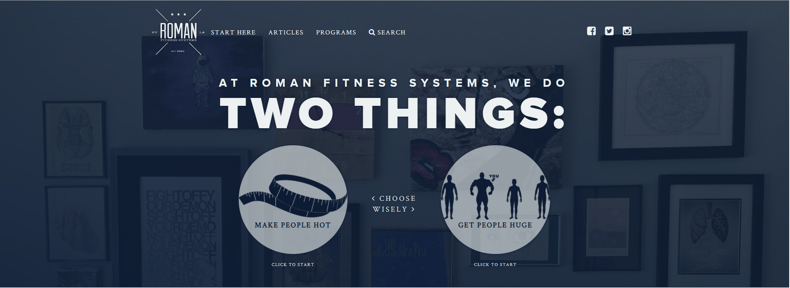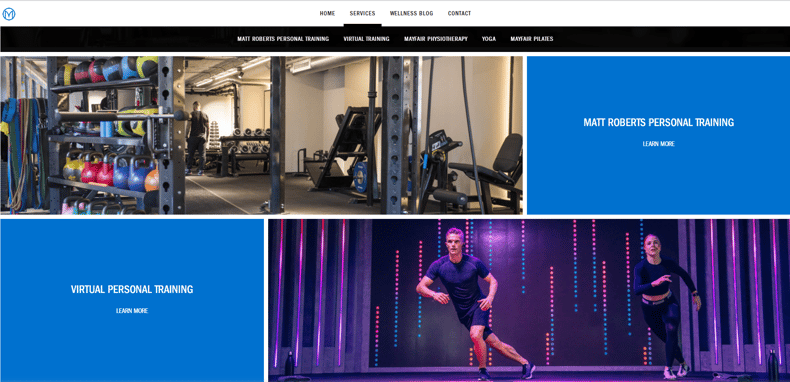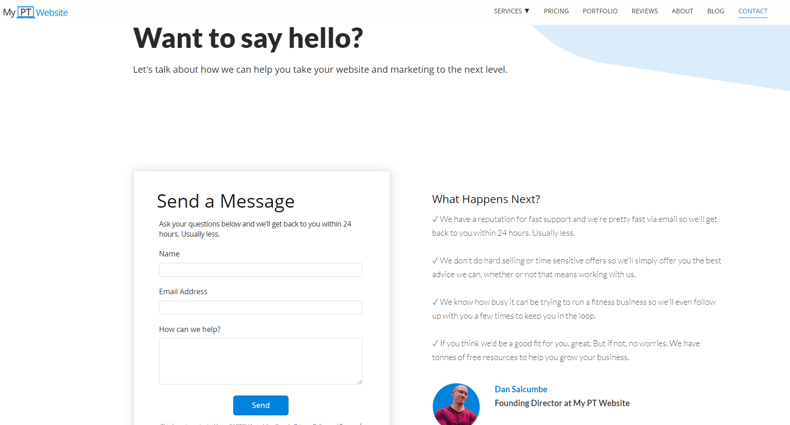Having your own personal training website is pretty cool, right? And it is – your website is the central hub for your business. It's how you engage prospective clients, and introduce your services, your brand and your team.
However, it’s not going to do much good if it’s not properly optimized – and if you’re wondering why you’re not getting any leads, lack of optimization will be the cause.
In this blog, we’ll go over some quick ways you can improve your website optimization, and increase lead generation without having to be a tech wizard or fitness marketing expert.
These tips are about the most valuable advice I can give to personal trainers wanting to really leverage their website to gain more clients.
1. Home Page – when a potential client lands, keep them there
The home page is typically for brand new visitors to your site. They might find you in Google or navigate to your site from social media. The purpose of this page is to invite users to browse your site, so they can learn more about what services you offer.
Unless you have a limited time, one-off promotional offer, consider eliminating all lead capture from your home page and simply invite people to take their next logical step, which is usually to see your services or get in touch.
Your home page is an introduction – it should be visually attractive and aesthetically modern, with brief text saying who you are, and why you’re the best at what you do. Roman Fitness Systems is a good example – note the “We do two things” – it grabs you immediately while telling you what it is they do.
2. About Page – where they get the full story
This is really a no-brainer. Interested website visitors want to know more about you. This is where you give them some background on how you became a PT and why, along with your skills, experience and education.
Tell a story, add some pictures and a gentle call to action to connect with you personally. Remember – this page is about connecting with your clients on a human level – you’re a personal trainer. Keep it personal.
If you’ve been through the same experience your ideal clients are going through, talk about it. If you haven’t, talk about how you’ve helped people who have.
I don’t know you, but I do know you’re in this industry to help people. Simply tell them why you want to do that, how you intend to do it and how it’s worked out for previous clients. It’s what Armoury Coaching Studio does – not just who they are, but if they’re the right fit for you.
3. Services Page – display your offering
This is the ‘money’ page. This is where visitors find out exactly what you do and how much it costs. When it comes to pricing, it’s a good idea to either include it here or a link to a pricing page that delivers all the details.
Your call to action on this page is not to ‘Buy Now’. You’re a service provider, not Amazon. The next logical step for someone seeking your services is to get in touch with you so they can ask specific questions. That’s because all humans have the same thing in common. We all think we’re special.
Matt Roberts combines awesome visuals and clear text to illustrate what they do – this is a great example of a Services page.
4. Contact Page – make it easy to engage
The Contact page should have a single purpose. To make it easy for people to get in touch.
You’ll see a lot of trainers include a really long application form because a popular internet marketer said it’s the best way to qualify new leads
They’re not wrong, but it’s the best way to qualify WARM leads. People with whom you already have rapport. People who have seen your content and ads for some time. But most website visitors will be COLD leads. They don’t know or trust you yet. For them, a simple Name, Email and Your Message fields will suffice.
Pro tip for your contact page
Make sure your contact form is positioned at the top of the content area and on the left hand side. That way, when mobile visitors go to it, the first thing they see is the best way to find you.
Like their Services Page, Matt Roberts has the kind of Contact Page that works.
5. Regular blogs – ensure your website is dynamic
If your website is your piece of online real estate, then your blog is your shop window. It’s where all the good stuff is. Blogging deserves a whole post of its own because it can be a pretty deep subject, but let’s just talk about the page itself.
People who land on your blog page are interested in reading more. Here’s why. Most people who visit your site will do so because you promoted some awesome content somewhere. That means the person has gone directly to an article… NOT the blog page that lists all of your articles. So if someone goes to your blog page (the list of blogs) they have done so purposefully. They want to see more.
Make sure you have a bit of lead capture in the sidebar to make it super easy for people to get more of your blogs in their inbox.
A simple Sign Up for Exclusive Updates call to action works great. It’s general but works surprisingly well.
Up-to-date and topical, with a lead capture at the bottom, James Farmer knows how to make a blog page work.
Bonus Advice – you can’t manage what you don’t measure
When things aren’t working as expected and the leads aren’t coming in, it’s all too tempting to start tinkering with subscribe forms on your home page or adding a pop up that interrupts website visitors when they try to leave your site.
Don’t. A well designed website will always do its job. However, no matter how great the design, a website is worth nothing without traffic.
Don’t make any changes until at least 1,000 people have visited that page. There’s just no way of knowing whether the website is doing its job until you get eyes on it.
Summary
Your website is a key marketing asset, not an online brochure. It's how you demonstrate your culture and the services you offer, and your commitment to a great client experience. Make sure your website is engaging and regularly updated, and that you're keeping it optimized with tried-and-true methods.
Want to learn more about how to generate more leads? The Ultimate Lead Generation Checklist For Personal Trainers is a must! Download it here.
Dan Salcumbe
Founder of My Personal Trainer Website
Dan helps personal trainers build websites and create marketing strategies using the latest inbound marketing methods. Dan likes coffee, motorbikes and spending time with his family.
Facebook | Twitter | Email













